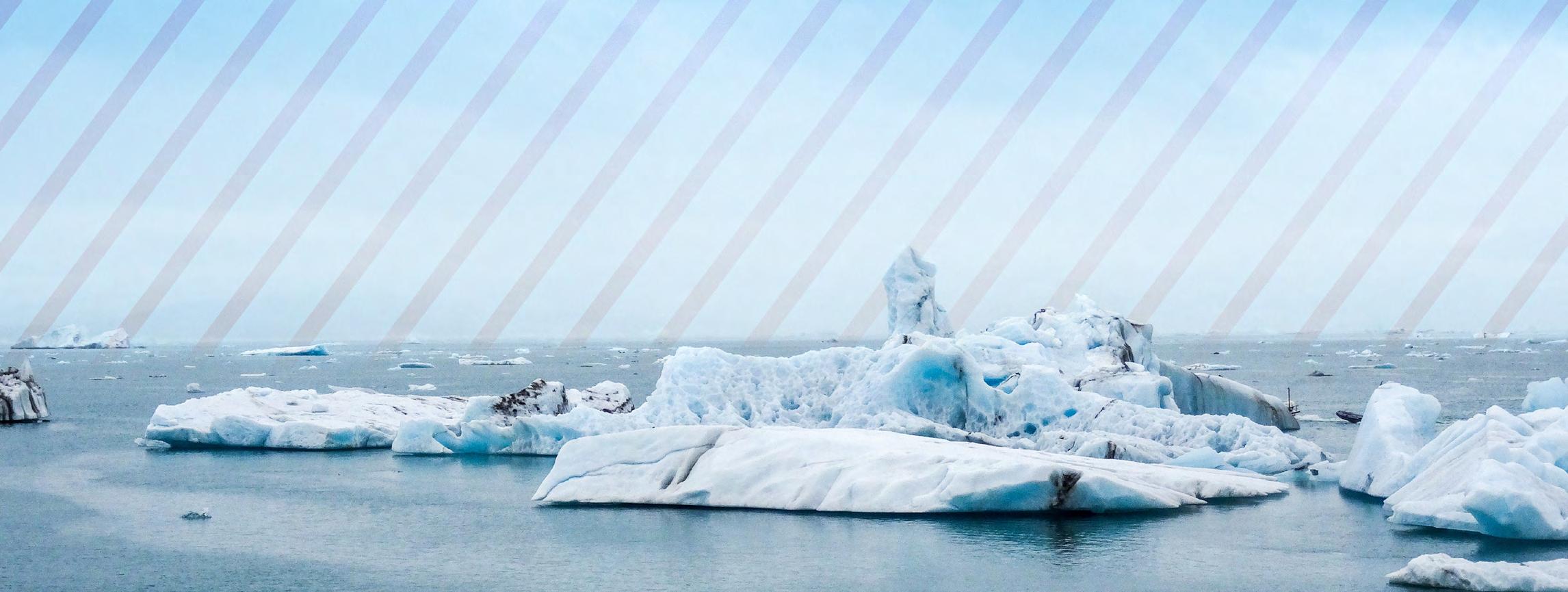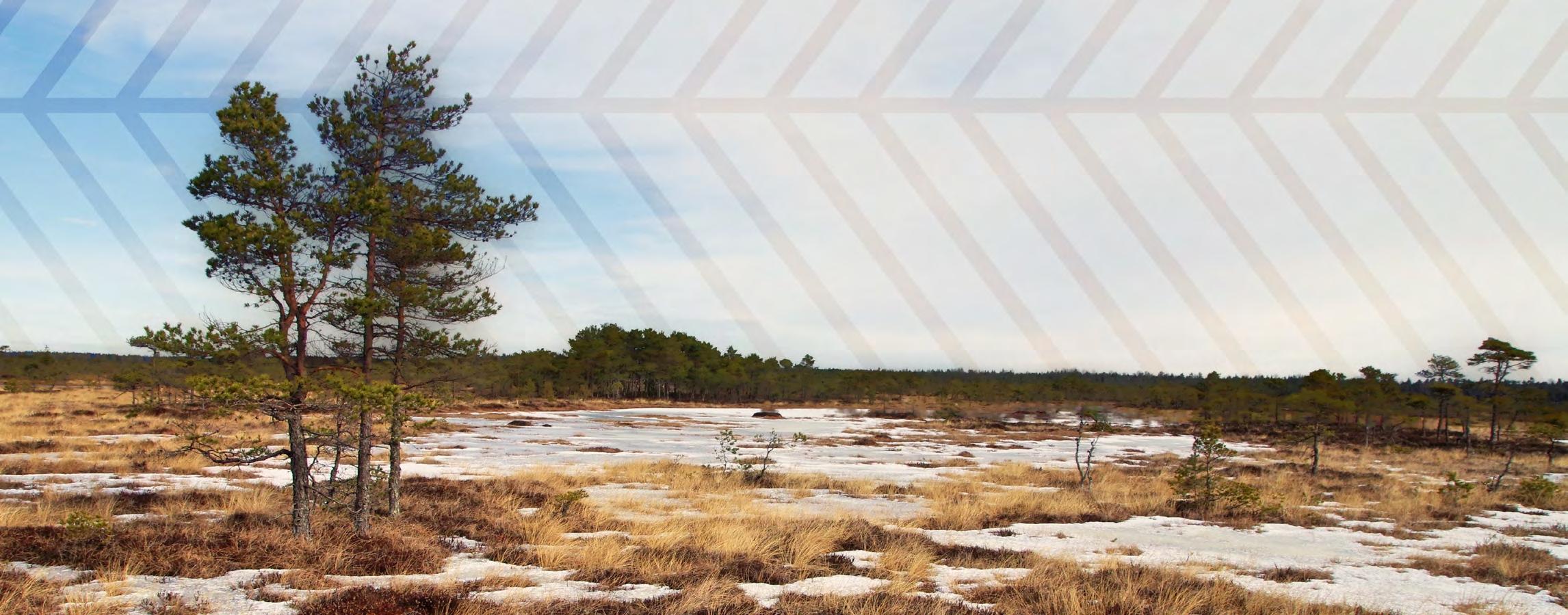
6 minute read
A. Understanding Global Warming of 1.5°C
A. Understanding Global Warming of 1.5°C4
A.1 Human activities are estimated to have caused approximately 1.0°C of global warming5 above pre-industrial levels, with a likely range of 0.8°C to 1.2°C. Global warming is likely to reach 1.5°C between 2030 and 2052 if it continues to increase at the current rate. (high confidence) (Figure SPM.1) {1.2}
Advertisement
A.1.1 Reflecting the long-term warming trend since pre-industrial times, observed global mean surface temperature (GMST) for the decade 2006-2015 was 0.87°C (likely between 0.75°C and 0.99°C)6 higher than the average over the 1850-1900 period (very high confidence). Estimated anthropogenic global warming matches the level of observed warming to within ±20% (likely range). Estimated anthropogenic global warming is currently increasing at 0.2°C (likely between 0.1°C and 0.3°C) per decade due to past and ongoing emissions (high confidence). {1.2.1, Table 1.1, 1.2.4}
A.1.2 Warming greater than the global annual average is being experienced in many land regions and seasons, including two to three times higher in the Arctic. Warming is generally higher over land than over the ocean. (high confidence) {1.2.1, 1.2.2, Figure 1.1, Figure 1.3, 3.3.1, 3.3.2}
A.1.3. Trends in intensity and frequency of some climate and weather extremes have been detected over time spans during which about 0.5°C of global warming occurred (medium confidence). This assessment is based on several lines of evidence, including attribution studies for changes in extremes since 1950. {3.3.1, 3.3.2, 3.3.3}
4 See also Box SPM.1: Core Concepts Central to this Special Report. 5 Present level of global warming is defined as the average of a 30-year period centred on 2017 assuming the recent rate of warming continues. 6 This range spans the four available peer-reviewed estimates of the observed GMST change and also accounts for additional uncertainty due to possible short-term natural variability. {1.2.1, Table 1.1}

A.2 Warming from anthropogenic emissions from the pre-industrial period to the present will persist for centuries to millennia and will continue to cause further long-term changes in the climate system, such as sea level rise, with associated impacts (high confidence), but these emissions alone are unlikely to cause global warming of 1.5°C (medium confidence). (Figure SPM.1) {1.2, 3.3, Figure 1.5}
A.2.1 Anthropogenic emissions (including greenhouse gases, aerosols and their precursors) up to the present are unlikely to cause further warming of more than 0.5°C over the next two to three decades (high confidence) or on a century time scale (medium confidence). {1.2.4, Figure 1.5}
A.2.2 Reaching and sustaining net zero global anthropogenic CO2 emissions and declining net non-CO2 radiative forcing would halt anthropogenic global warming on multi-decadal time scales (high confidence). The maximum temperature reached is then determined by cumulative net global anthropogenic CO2 emissions up to the time of net zero CO2 emissions (high confidence) and the level of non-CO2 radiative forcing in the decades prior to the time that maximum temperatures are reached (medium confidence). On longer time scales, sustained net negative global anthropogenic CO2 emissions and/ or further reductions in non-CO2 radiative forcing may still be required to prevent further warming due to Earth system feedbacks and to reverse ocean acidification (medium confidence) and will be required to minimize sea level rise (high confidence). {Cross-Chapter Box 2 in Chapter 1, 1.2.3, 1.2.4, Figure 1.4, 2.2.1, 2.2.2, 3.4.4.8, 3.4.5.1, 3.6.3.2}
A.3 Climate-related risks for natural and human systems are higher for global warming of 1.5°C than at present, but lower than at 2°C (high confidence). These risks depend on the magnitude and rate of warming, geographic location, levels of development and vulnerability, and on the choices and implementation of adaptation and mitigation options (high confidence). (Figure SPM.2) {1.3, 3.3,3.4, 5.6}
A.3.1 Impacts on natural and human systems from global warming have already been observed (high confidence). Many land and ocean ecosystems and some of the services they provide have already changed due to global warming (high confidence). (Figure SPM.2) {1.4, 3.4, 3.5}
A.3.2 Future climate-related risks depend on the rate, peak and duration of warming. In the aggregate, they are larger if global warming exceeds 1.5°C before returning to that level by 2100 than if global warming gradually stabilizes at 1.5°C, especially if the peak temperature is high (e.g., about 2°C) (high confidence). Some impacts may be long-lasting or irreversible, such as the loss of some ecosystems (high confidence). {3.2, 3.4.4, 3.6.3, Cross-Chapter Box 8 in Chapter 3}
A.3.3. Adaptation and mitigation are already occurring (high confidence). Future climate-related risks would be reduced by theupscaling and acceleration of far-reaching, multilevel, and cross-sectoral climate mitigation and by both incremental and transformational adaptation (high confidence). {1.2, 1.3, Table 3.5, 4.2.2, Cross-Chapter Box 9 in Chapter 4, Box 4.2, Box 4.3, Box 4.6, 4.3.1, 4.3.2, 4.3.3, 4.3.4, 4.3.5, 4.4.1, 4.4.4, 4.4.5, 4.5.3}

Cumulative emissions of CO2 and future non-CO2 radiative forcing determine the probability of limiting warming to 1.5°C
a) Observed global temperature change and modeled responses to stylized anthropogenic emission and forcing pathways
Global warming relative to 1850-1900 (°C)
2.0
1.5
1.0 Observed monthly global mean surface temperature
Estimated anthropogenic warming to date and likely range
0.5
0 1960 1980 2000 2017
2020 Likely range of modeled responses to stylized pathways Global CO2 emissions reach net zero in 2055 while net non-CO2 radiative forcing is reduced after 2030 (grey in b, c & d) Faster CO2 reductions (blue in b & c) result in a higher probability of limiting warming to 1.5°C No reduction of net non-CO2 radiative forcing (purple in d) results in a lower probability of limiting warming to 1.5°C
2040 2060 2080 2100
b) Stylized net global CO2 emission pathways
Billion tonnes CO2 per year (GtCO2/yr)
c) Cumulative net CO2 emissions
Billion tonnes CO2 (GtCO2)
d) Non- CO2 radiative forcing pathways
Watts per square metre (W/m2)
CO2 emissions decline from 2020 to reach net zero in 2055 and 2040
1980 2020 2060 2100
Faster immediate CO2 emission reductions limit cumulative CO2 emissions shown in panel (c). Maximum temperature rise is determined by cumulative net CO2 emissions and net non-CO2 radiative forcing due to methane, nitrous oxide, aerosols and other anthropogenic forcing agents.
3 000
2 000
1 000 Cumulative CO2 emissions in pathways reaching net zero in 2055 and 2040
3
2
1 Non-CO2 radiative forcing reduced after 2030 or not reduced after 2030
0
1980 2020 2060 2100 0
1980 2020 2060 2100
Figure SPM.1 Panel a: Observed monthly global mean surface temperature (GMST, grey line up to 2017, from the HadCRUT4, GISTEMP, Cowtan-Way, and NOAA datasets) change and estimated anthropogenic global warming (solid orange line up to 2017, with orange shading indicating assessed likely range). Orange dashed arrow and horizontal orange error bar show respectively the central estimate and likely range of the time at which 1.5°C is reached if the current rate of warming continues. The grey plume on the right of panel a shows the likely range of warming responses, computed with a simple climate model, to a stylized pathway (hypothetical future) in which net CO2 emissions (grey line in panels b and c) decline in a straight line from 2020 to reach net zero in 2055 and net non- CO2 radiative forcing (grey line in panel d) increases to 2030 and then declines. The blue plume in panel a) shows the response to faster CO2 emissions reductions (blue line in panel b), reaching net zero in 2040, reducing cumulative CO2 emissions (panel c). The purple plume shows the response to net CO2 emissions declining to zero in 2055, with net non-CO2 forcing remaining constant after 2030. The vertical error bars on right of panel a) show the likely ranges (thin lines) and central terciles (33rd - 66th percentiles, thick lines) of the estimated distribution of warming in 2100 under these three stylized pathways. Vertical dotted error bars in panels b, c and d show the likely range of historical annual and cumulative global net CO2 emissions in 2017 (data from the Global Carbon Project) and of net non-CO2 radiative forcing in 2011 from AR5, respectively. Vertical axes in panels c and d are scaled to represent approximately equal effects on GMST. {1.2.1, 1.2.3,1.2.4, 2.3, Figure 1.2 and Chapter 1 Supplementary Material, Cross-Chapter Box 2 in Chapter 1}


